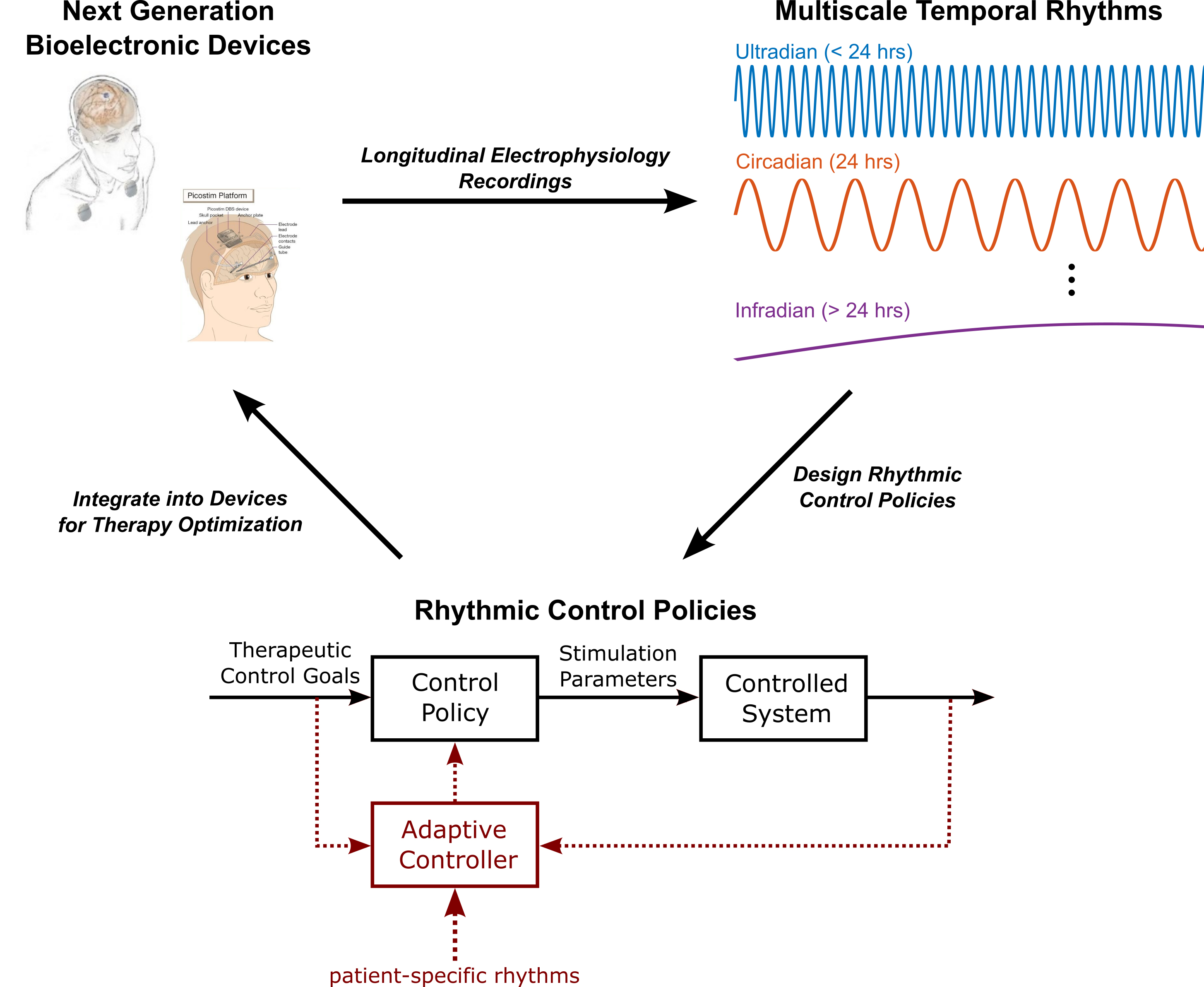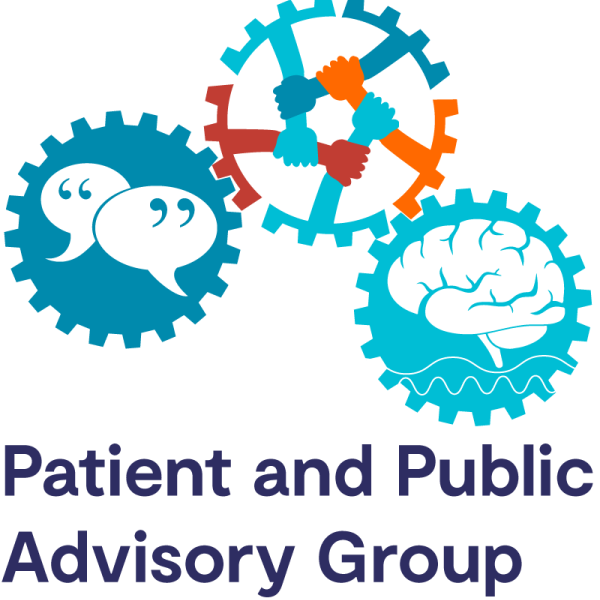Embedding digital chronotherapy into bioelectronic medicines.
Electronic devices can be used to sense and stimulate nerve cell activity for therapy. Biological rhythms are able to influence how effective this is. We propose that future devices should record and use information about biological rhythms to better control the stimulation of nerve cells and maximize the benefits of therapy. Our proposal is motivated by long-term recordings of data from people with Parkinson’s and epilepsy.
Biological rhythms pervade physiology and pathophysiology across multiple timescales. Because of the limited sensing and algorithm capabilities of neuromodulation device technology to-date, insight into the influence of these rhythms on the efficacy of bioelectronic medicine has been infeasible. As the development of new devices begins to mitigate previous technology limitations, we propose that future devices should integrate chronobiological considerations in their control structures to maximize the benefits of neuromodulation therapy. We motivate this proposition with preliminary longitudinal data recorded from patients with Parkinson's disease and epilepsy during deep brain stimulation therapy, where periodic symptom biomarkers are synchronized to sub-daily, daily, and longer timescale rhythms. We suggest a physiological control structure for future bioelectronic devices that incorporates time-based adaptation of stimulation control, locked to patient-specific biological rhythms, as an adjunct to classical control methods and illustrate the concept with initial results from three of our recent case studies using chronotherapy-enabled prototypes.

2022. iScience, 25(4):104028.
2017.Mov. Disord., 32(8):1183-1190.
2024. Neurobiol Dis, 199:106565.
2023. eLife, 12:e82467

